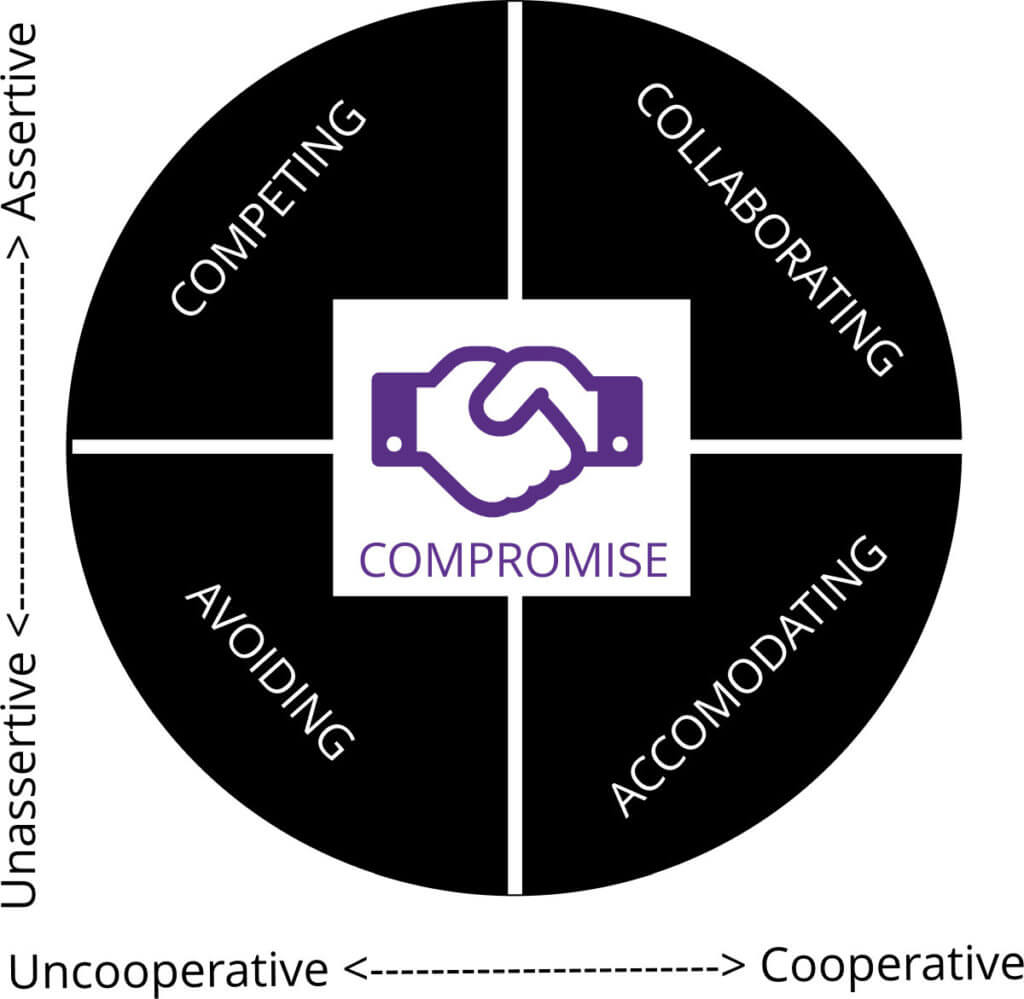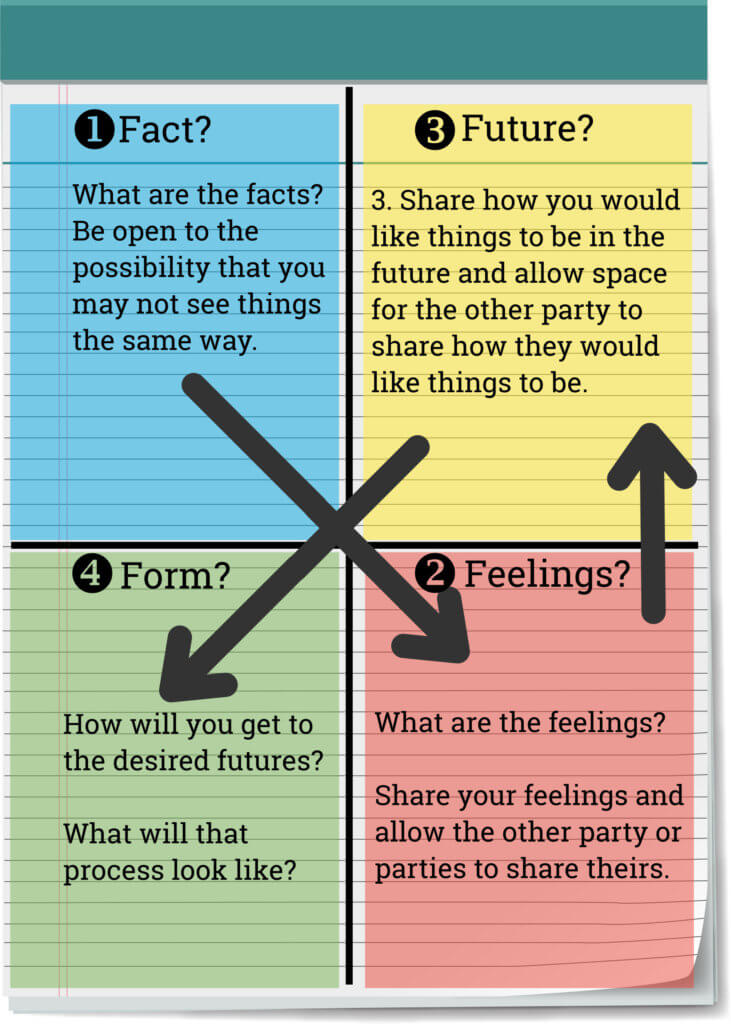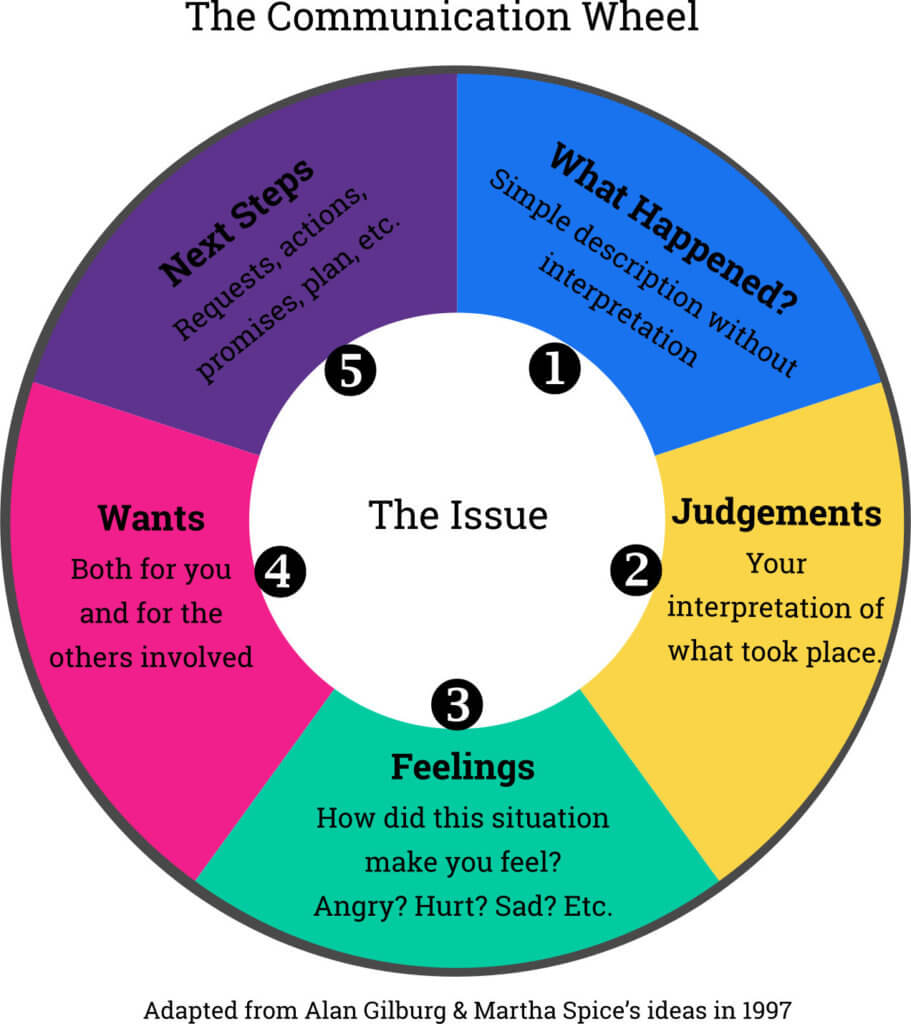4 Creative Ways of Resolving Conflict

What makes a story great?
The conflict! There is an obstacle, tension, trial – something that must be overcome. It’s the process, including the twists and turns that makes a story gripping. That’s why the best books, TV shows, or movies revolve around a conflict. Here’s an amusing example from The Office of conflict, although I am not so sure the solution resolved the problem.
In real life, it’s a different story! Conflict is anything but exciting! In the midst of conflict, addressing it in a healthy and productive way suddenly becomes a mystery. Emotions, agendas, and fears all have the power to throw you off kilter. For some, disagreements cause them to shut down, avoid the conflict altogether, perhaps even melt into a puddle. For others, they get wound up and escalate the conflict. While those are extreme responses, neither is very productive!
Wouldn’t it be nice if you could put the world on pause when conflict arises to give you time to sort through your thoughts and feelings and express them articulately? A simple space to reset and turn on your listening/understanding ears so that resolving conflict is possible? Maybe that’s just my fantasy.
You can slow down the pace, pause, and gather yourself IF you choose to. That takes being calm, mindful, and open to other points of view – something a successful leader is able to do so that they are a work towards solutions.
How Do You Handle Conflict?
You may have a tendency to handle conflict in one of the five ways illustrated below in the 5 Conflict Resolution Strategies – an idea developed by Kenneth Thomas and Ralph Kilmann. You can learn more about their ideas around conflict and take the Thomas-Kilmann Instrument or the TKI assessment here. Keep in mind that there is no one “right” way to resolve conflict. It really depends on the situation. For example, if you are buying a car from a stranger you might be more competitive. If you are planning a vacation with your spouse, you might want to be more collaborative.
Knowing how you typically deal with conflict is useful, and so is understanding how others deal with it. With that awareness you can make adjustments, just like you can alter your approach to fit the personality or behavioral style (DISC) of the other person or persons involved in the conflict like I shared last week.
With that being said, I want to share with you four “structures” to help you handle conflict with more creativity! Which of the four you use will depend on the situation and what feels most comfortable.
1. To The Point
This method is simple and direct – something you may want to Initiate a conversation with.
“I feel _______________ when you ____________________ and what I need is_________________.
2. 7 C’s
- Remain CALM
Count to 10 if you have to!
- List your CONCERNS
Do this prior to a discussion about a conflict. Ask yourself questions like “What led to the conflict?” What’s the root problem?” How is this situation triggering my Fear Monster?” You may even want to work with a coach to help you sort through a particular conflict.
- COMMUNICATE
Let the other person begin and really LISTEN to their concerns. Ask them questions to clarify so you really and truly understand their perspective before sharing yours. Then offer them the same attentive listening you would want them to give you.
- Be CREATIVE
Brainstorm possible solutions. Consider alternatives. Being forced to arrive at a creative solution often results in the best solutions!
- CALL A Timeout
When you feel the conversation heating up, call a timeout; take a brief break. Then resume the conversation after everyone has cooled down and you’ve had a moment to gather yourself and process your thoughts and feelings. It’s OK to say in the middle of a conflict you need a quick timeout to gather your thoughts. Odds are, the other person is ready for that break too! A little advice…set an agreed upon time frame for resuming. I can assure you that calling a timeout to avoid a conflict will only create a new conflict!
- Keep It CONSTRUCTIVE
There is no point in reviewing the past again and again or letting things get hostile. The more you can focus on the future and possible solutions, the more likely you are to arrive at a positive solution.
- COMPROMISE
Do what you can from your end to arrive at a workable compromise. If you are willing to be creative, explore the options, and compromise there is most likely a solution that will be agreeable to the parties involved!
This is a whole lot to remember when caught off guard by disagreement, however, the 7 C’s can serve as a guide when resolving conflict. I encourage you to work through the C’s focusing on one “C” at a time until you are able to remember all seven. Trust me, just choosing to be calm will make a big difference!
3. Facts, Feelings, Future & Form
This is a simple way of resolving conflict based on HBDI Thinking Preferences. Most of us are great at communicating feelings or stating all the facts because that’s how we prefer to think. It’s what how we naturally think. Doing a “full brain walk around” ensures that you are covering all four of the thinking preferences which is important because the others involved may not share your thinking preferences.
4. The Communication Wheel
While the Communication Wheel resembles aspects of the above methods this presentation may resonate more with you.
While our focus here is resolving conflict, these same methods can be used to give compliments, share feedback, or simply expressing yourself with greater clarity. You may even want to print out whichever method you want to use so that you can follow it AND so that the other person not only knows where you are going, but can also communicate using the same method if they wish.
Resolving conflict is challenging. I suspect we can all grow in this area! The alternative? Lots of unresolved issues in your life! Lots of “elephants in the workplace”!
Did you know that unforgiveness and resentment are a significant factor in many of today’s health problems? Harboring ill feelings towards others never hurts them, it ONLY hurts you.
When conflict is left unresolved and resentment lingers in the work place (or at home) it creates a toxic environment. Ultimately it will inhibit productivity and the vibe will be negative. That’s not beneficial for anyone!
While conflict makes for a great story – the best work places, organizations, and homes are conflict free – not because there isn’t any conflict, but because it is quickly dealt with in a proactive and creative way!
What unresolved conflicts do you need to address?
Has this post been beneficial? Share it on social media or email it to a friend or colleague.
© Can Stock Photo / alphaspirit




Thanks for today’s blog it was so helpful because conflict can be anytime in our life but but i get new way that i can avoid them and how i can solve them. i need to list my concerns, to communicate and to count before I have to speak.
Delighted today’s blog was helpful to you Ishema! I appreciate you sharing that with me!